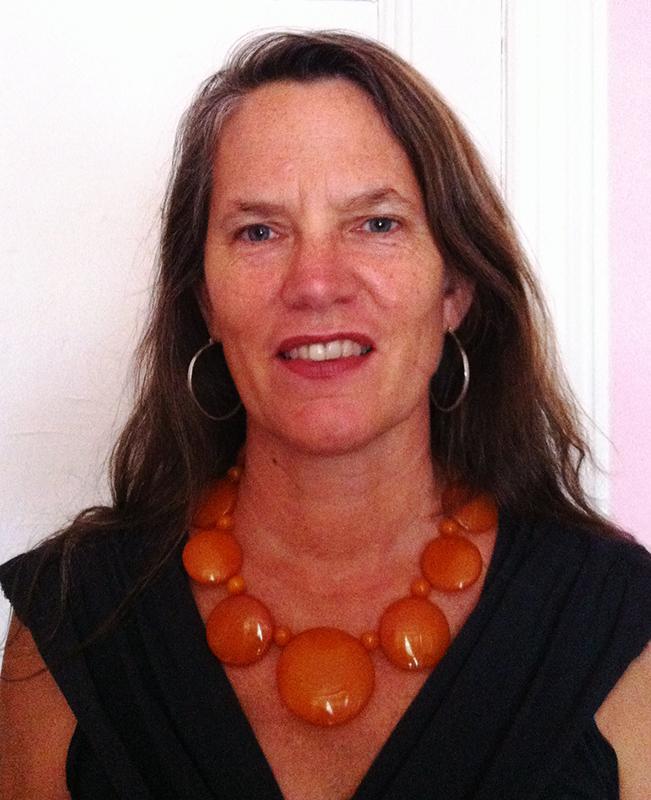Off the Cuff: Kate Doyle, Analyst at the National Security Archive
December 4, 2015
Kate Doyle is a senior analyst of U.S. policy in Latin America at the National Security Archive, an organization that uses declassified U.S. government documents to shed light on American foreign policy. Doyle is featured in the documentary Granito: How to Nail a Dictator, directed by Pamela Yates. Granito depicts activists trying to bring justice to crimes against humanity committed during the Guatemalan Civil War. The documentary was screened in the Adam Joseph Lewis Center for Environmental Studies on Monday, and Doyle spoke briefly and answered questions from the audience afterwards. Doyle talked to the Review on Thursday.
For people who haven’t seen the documentary, can you give an overview of what happened in Guatemala in terms of the genocide and the conflict in general?
Guatemala experienced an armed conflict between small guerrilla forces and the Guatemalan government for more than 35 years, a conflict that was set off by a U.S.-engineered coup against Guatemala’s president in 1954 and was fueled in large part by U.S. military and financial support to the government army — a conflict that was fought on the military side by a savage counterinsurgency campaign that targeted armed guerrillas and anyone and everyone who appeared politically suspect in the government’s eyes.
So many hundreds and thousands of people — civilians — died in this conflict. There were some 40,000 disappeared people — people kidnapped and secretly killed by the military over the course of the war. And I think over a million people, mostly from the Mayan Indian communities, were displaced by the war and fled into Mexico or deep into the jungle or the mountains of Guatemala for years, decades.
So Guatemala suffered this tremendously violent period of repression and political violence which ended in 1996 with the peace accord. And Granito is really a documentary that looks at the post-conflict measures taken by Guatemalans — by society — to confront the legacy of that violence and of the tremendous number of human rights abuses that were committed during the war.
How specifically did they confront that “legacy of violence”?
Among the different ways that Guatemalan society tried to deal with the damage that the war wrought were, first of all, establishing a truth commission to try to clarify how this happened, to explain to society how this happened. Investigators sought to analyze the causes behind the war. And there have been reparations to the mostly Mayan communities that were hardest hit during the conflict, where the massacres took place.
And ultimately there have been prosecutions in the last five or six years, attempts to go after, through criminal human rights cases, some of the perpetrators. And in 2013, the former president — really dictator — of Guatemala, Efraín Ríos Montt, was indicted on charges of genocide against the Mayan people and crimes against humanity. And his trial took place in the spring of 2013 and on May 10, 2013, he was convicted of those crimes and sentenced to 80 years in prison. And that was very much a watershed moment for Guatemala.
What was the American role in this violence?
The first American role was the decision under President Dwight Eisenhower to topple the president of Guatemala — who had been elected in a democratic election — President Jacobo Arbenz. That coup was engineered by the CIA and ended successfully, in the CIA’s view, with the installation of a military dictator named Castillo Armas; that coup ended a 10-year experiment in democracy and reformist policy in Guatemala.
Guatemala was accustomed to military dictatorship, Guatemala was accustomed to authoritarian government, and this kind of new twist in the 1940s and ’50s — there was this popular demand for change and for reform — ended up with carrying out democratic elections, an exciting development for the country.
So the coup really not only took out a president that the Guatemalan people had fairly elected, but it also completely destroyed the trajectory of this experiment of social reform. Before ’54, when the coup happened, the country was essentially a neofeudal state, with a tiny landed elite holding the vast majority of the country’s resources and land and a large majority-poor population — most of them Mayan indigenous — who had nothing. So the coup represented in a very deep way the destruction of hope in Guatemala. That began the spiral of violence that blossomed into this terrible civil conflict.
It was a tiny guerrilla group that began in 1960 to challenge the authoritarian regime that turned into four different armed insurgency groups that grew in strength. The response of the government — again with full U.S. support and aid in the form of weapons and money and training and intelligence — the response was to launch these counterinsurgency operations that involved scorched-earth assaults on Mayan communities, massacring people who lived there, razing the villages, burning their houses, burning their crops, slaughtering their animals. The ultimate punishment of elimination, essentially. Those massacres took place in the 1970s and ’80s. And although the U.S. by 1978 was not formally providing open or overt military aid to Guatemala because of Jimmy Carter’s new human rights commission on aiding foreign governments, the U.S. did continue to pour millions of dollars into Guatemala covertly through the CIA.
So we never stopped funding the Guatemalan military despite signs that they were slaughtering civilians; it was very clear. And when I go through declassified U.S. documents that I work with at the National Security Archive, there’s no doubt that U.S. officials operating out of the embassy and the CIA station knew perfectly well that Indian communities were being razed and Mayans were being massacred, men, women and children; knew perfectly well that labor organizers and teachers and students and writers and lawyers were being kidnapped and tortured and then secretly executed in Guatemala City as a way of kind of cutting off the head of all dissent and political opposition. And yet U.S. strategic interests in Central America at the time — the 1970s and ’80s — were dominated by our anticommunist ideology. And so we didn’t try to stop them.
As Americans, how do you think we should grapple with this violence that American foreign policy caused during this period in Guatemala and throughout Latin America?
I feel like we have to comprehend the lessons that come out of this. We have to analyze this history. We have to incorporate it into our history and conversations because when we talk about Iraq, Afghanistan, Abu Ghraib, torture, the use of drones, assassination programs — we have to look back at other historical periods and other places where we tried those things. And it ended in disaster, if you look at Chile, if you look at Argentina, if you look at Guatemala and you look at El Salvador. These were countries that we fully, wholeheartedly supported in their military authoritarian projects. And it ended in the disaster of hundreds of thousands of civilian deaths throughout Latin America. And the essential structural economic and political reasons for the conflict — the inequality, the poverty, the racism, the lack of access to political power for most of the population of these societies — really didn’t change that much. Guatemala remains a terribly poor and afflicted state. A corrupt state, a violent state. So what did we get for our policy in the region?
One thing that I found interesting from the documentary was the huge cellar full of documentation that human rights groups found. How did that happen? It seems incredible that they’d just leave all the evidence there.
That was the entire historical archive for one of the country’s main security institutions, the National Police. It’s like we stumbled upon the entire archive of the FBI once the FBI had been abolished. The National Police had been abolished by the peace accords because of their intimate connection and role in carrying out acts of terror against civilians.


























